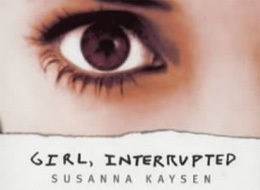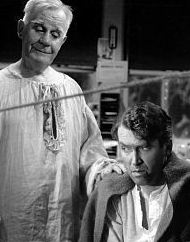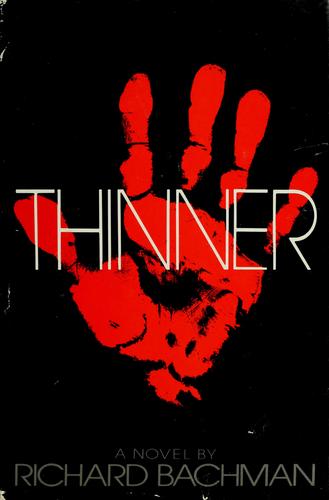The might of the Egyptian pharaohs continues to resonate throughout history, with many of their names remaining famous and highly revered even centuries after the fact. Egyptians concerned themselves with preserving their bodies, their spirits and their legacies for all eternity…and in many respects, they succeeded. But the legend of the Egyptian pharaohs isn’t so much a gift of the gods as it is the result of very well-thought-out propaganda campaigns, clever lies and positively brilliant marketing.
The Divine Birth of Queen Hatshepsut
Hatshepsut was probably the first female pharaoh of Egypt to rule the kingdom in her own right. And in a patriarchal society like ancient Egypt, this was a tough task. She did many things during her time on the throne to show that she was capable of being the leader of the empire and had many works of art created that would depict her this way.
Many pharaohs linked themselves to the gods in various works of art. Hatshepsut really drove this point home to make it quite clear that was divinely ordained to rule over Egypt. Her temple is carved with many scenes, including a birth scene in which the king of all gods, Amun, impregnants Hatshepsut's mother. This made Hatshepsut the daughter of the king of gods himself. Not a bad lineage.
This clearly made her a legit pharaoh and one with the backing of the gods, no less. Of course, this was all a lie. Hatshepsut was certainly a mortal woman and probably not the result of a divine birth or godly conception.
Amenemhet I Biography
In the real story, Amenemhet was not born royal. He was a vizier, which is sort of like being a prime minister, for the guy who was pharaoh before him. But you know how rumors work. Once you plant the right one and it takes root, it spreads like weeds. Such is the story of Amenemhet, which was quite a clever bit of self-marketing.
The story was written out on a papyrus that begins with a prophecy, which is always a great place to begin a story. According to the prophecy, Amenemhet was going to be a king. The prophecy went on to say that life would be terrible in Egypt but then, a king would come from the south. His name would be Ameny.
According to the prophecy that was written after all these events actually transpired, Ameny would take both the red and white crown of Egypt and unify the Upper and Lower kingdoms. And though he was common-born, or born of the people, his name would cause the people to rejoice.
It's a great story but it's an even greater way to self-promote and it's a great example of how Egyptian pharaohs loved to write their own lie-strewn legends.
Battle of Kadesh
The Battle of Kadesh was probably the biggest battle the world had known up to that point, which specifically was the year 1274 B.C.E. Upon returning from battle, Ramses II ordered a huge mural carved on the walls of his memorial temple to commemorate the great battle.
What a site it is. The mural shows the mighty pharaoh Ramees himself crushing Egypt's sworn enemy, the Hittites, like the bugs they are. The mural depicts the pharaoh, and Egypt, as the grad victors of the battle. It is awe-inspiring stuff. And it's basically all a lie.
The Egyptian and Hittite empires were trading friends and sometimes foes, often battling each other and fighting for the rich Levant region and its natural resources. This led to an all-out war in 1274, when things came to a head in the huge battle of Kadesh.
The artifacts uncovered in the Hittite empire relating to the battle tell a different tale than the story Ramses sold to his own people, and to history. The Treaty of Kadesh, the oldest peace treaty ever discovered so far, shows that Egypt actually made a great many concessions to the Hittite empire. The Hittites gained a number of new cities and lands and the treaty is clearly a better deal for their empire than for Egypt.
There's no mention of signing the treaty on the great wall Ramses commissioned, of course.
Ramses the Not So Great
Ramses II, known in history as Ramses the Great, ruled Egypt from 1279 to 1300. And according to all the art about him, he was an incredible warrior-king. With the might of a god, Ramses led his people to victory after victory as he quelled the Libyans nearby. He claimed their lands for Egypt because he was a glorious pharaoh.
It's a big whopper of a lie, as is a lot of the image of Ramses the Great. Most of his greatness is just for show and in reality, his reign was far more nuanced. One of his biggest lies concerned neighboring Libya, which Ramses claimed to have subjugated. Evidence shows that actually, Ramses maintained a peaceful relationship with the neighboring kingdom and even relied on their knowledge. It was a much more symbiotic relationship, though in Egypt the monuments all proclaimed that great Ramses had basically annexed this land.
Amenhotep III is Favored by the Gods
Amenhotep III arguably didn't have the most stunning reign during his tenure as pharaoh. But you wouldn't know that to look at his fabulous mortuary temple. First, it's decorated with two enormous statues of the pharaoh himself guarding the entrance to the temple.
That's not all. There's also the god, Hapi, bringing two symbols of Egypt together. All this represents Amenhotep III bringing together the two parts of Egypt, Upper and Lower. Amenhotep III actually lost control over these kingdoms during his reign. But as the temple shows, his reign over both was actually ordained by the gods.
Of course, it was just a great sculpture. The fantastic imagery doesn't at all represent the reality of his reign. Which isn't really such a bad way to do things. If you tell everyone you were awesome after you die, it's not like they can really argue with you.
The Battle of the Delta
The Battle of the Delta is recorded in the longest hieroglyphic inscription ever found, at least so far. The battle was waged around the year 1175 B.C.E. when Egypt was under the rule of Ramses III. This is the day the Sea Peoples came to the shores of Egypt.
History is quite unsure who these people were, where they came from or precisely what they were so upset about. What is known is that they burned and pillaged their way across the known world, razing the main cities of Mycenean Greece to the ground. The great city of Troy was looted and burned and the Hittite empire was attacked so savagely that nothing of the great empire remained by the time the marauders were done with them.
This is the terrifying force that descended upon Egypt. Two battles took place, one by land and one by sea. But it was the battle on the sea that proved decisive. And according to the huge inscription Ramses ordered to be created, he totally kicked butt. He drove the Sea Peoples back into the sea, soundly defeating them in the name of Egypt.
And his version of events almost certainly is not true. Historically, the aftermath of the battle does not represent a time of strength and success for Egypt. In fact, Egypt was never the same after that battle and remained greatly weakened for the ensuing centuries. Meanwhile, the so-called survivors of the battle settled in the Levant, the most desirable and hotly contested land in the entire Egyptian empire. That doesn't seem like much of a defeat.
From Zero to Hero
Reigning as pharaoh from 1872 to 1854 B.C.E., Senusret III was an extremely young pharaoh when he first was crowned. Luckily, he reigned over a highly artistic time in Egypt and he had the support of wealthy patrons. Lots of art was created celebrating the young king and in a few years, he had become an idealized warrior-king, with monuments and artwork and depictions of his prowess in battle appearing throughout the Egyptian kingdom.
The artwork essentially lifted him to god status, turning him into an epic and legendary figure even in his own time...in spite of the fact that he was incredibly young and had achieved very little in his reign when this image was first cultivated. That's some seriously good propaganda.
The So Called Hyksos Invasion
It all happened around 1800 B.C.E. But what happened depends on who told the story. According to Egyptian pharaohs, the land was invaded by the awful Hyksos people. They were ruthless invaders, foreigners who wrested control of northern Egypt away from the rightful rulers by force. They created chaos, disaster, terror in the streets.
Evidence strongly suggests that the Hyksos were more immigrants than invaders and may have even invented the Egyptian alphabet. The archeological record suggests that they came to Egypt quite peacefully and ruled their area of the empire in relative quiet until Egyptian pharaohs seized the land...after a rather extensive mud-slinging campaign that painted them as violent offenders.
Cleopatra Was the Descendant of a Goddess
Cleopatra's name has become synonymous with sex appeal, cleverness, seduction and power. But that's the modern version of good old Cleo, Egypt's very last pharaoh. She was not popular in her own time among her people and had to murder quite a few relatives before she managed to reign as pharaoh, more often co-ruling with one of her husband-brothers at her side instead.
The Egyptian people weren't quite sure how to take Cleopatra and they weren't exactly chanting her name when she arrived in Alexandria with Caesar, who forcibly reinstated her as pharaoh over the land. She started to strongly associate herself with the goddess Isis, using images and symbols of the goddess to inform her own portraits. She was incredibly careful about her image and made the association between herself and Egypt's most powerful goddess clear as a way to prove she was a worthy pharaoh.
Though Cleopatra's image and legend would continue to grow, the goddess Isis suffered guilt by association. The Isis cult in Rome became incredibly unpopular after Cleopatra's suicide, particularly in Rome.
The Greatest Pharaoh of Them All
You've heard of names like Ramses the Great and Tutankhamun, Nefertiti and Cleopatra. But who was the greatest pharaoh of them all? If you take a look around Egypt, or if you ever did in the last 5,000 years, you might draw the conclusion that the greatest of all rulers of this land was clearly the guy who built that really massive, really impressive pyramid.
To get specific, that pharaoh was (probably) Khufu. Historians believe he is the one who had the great pyramid itself built, the largest ever constructed in the world and the tallest building in the entire world for thousands of years.
Greatness achieved. But Khufu was far from Egypt's greatest pharaohs by most standards. He certainly wasn't the first, the last, the richest or the most powerful. And while the Great Pyramid is certainly impressive, it's not the biggest building ever built in Egypt.
Most of Khufu's reign can be summed up in that pyramid, which was strictly a monument to him. There are no public spaces for the people to use and no practical service areas provided by the massive structure. It serves no purpose other than to announce to Egypt, and all of history, that Khufu was the greatest of them all.
But today, most people have no idea who Khufu was or know of anything he did other than use up a ton of resources on building a giant monument for his own acclaim.
Brooklyn Museum - Hatshepsut
DBPedia - Battle of the Delta
Gale - Archaeology: Propaganda of the pyramids
Gettysburg College - Androgyny in the Ancient World: The Intersection of Politics,
Religion and Gender in the Art of Hatshepsut
History - Cleopatra
Institutional Scholarship - Isis and Cleopatra in Rome : how one of history’s most famous queens influenced an Egyptian cult in the heart of the Roman Empire
Judith Starkston - Propaganda and Reality: Hittites vs Pharaoh Ramesses
Morehead State - Cleopatra as the Goddess Isis
Osirisnet - Senusret III
PBS - Ramesses II
Penfield - The New Kingdom - Part Two and the Age of Decline
The School For Excellence - Ancient History
Science - ‘Invasion' of ancient Egypt may have actually been immigrant uprising
The University of Manchester - New evidence shows might of Pharaoh Ramses is fake news
U.S. Naval Institute - The Last Great Pharaoh vs. The Sea Peoples
Wondrium Daily - Germination of Effective Propaganda: The Egyptian Dynasty XII
World History Encyclopedia - Senusret III














































